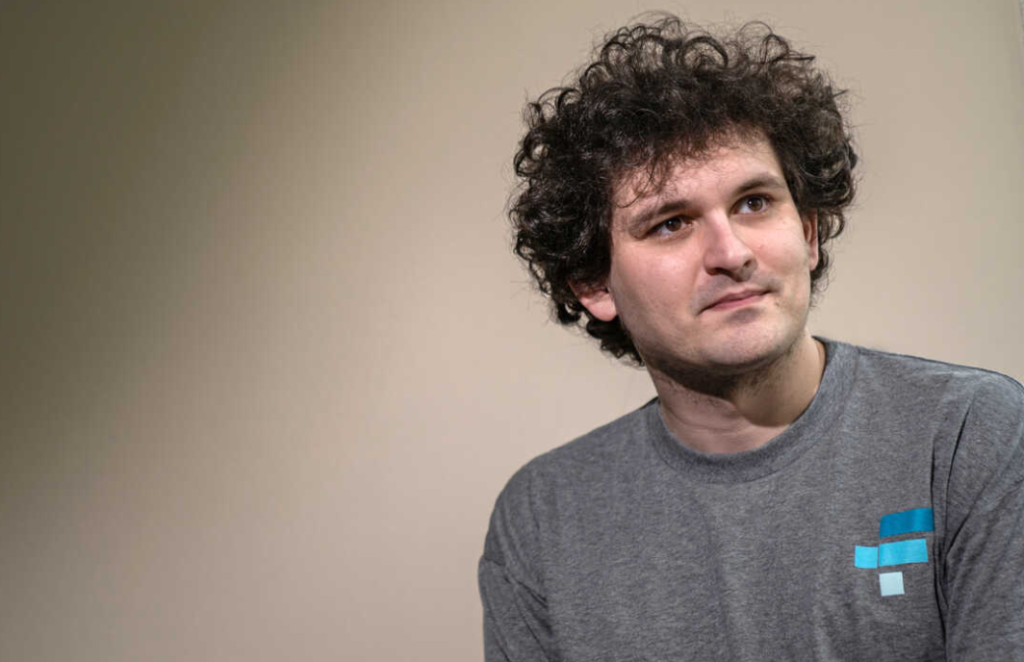Update, December 12 2022: Bankman-Fried Arrested
2022 has been quite a year for the co-founder of crypto exchange FTX, Sam Bankman-Fried.
In February, Bankman-Fried and 99 million other Americans watched Curb Your Enthusiasm and Seinfeld comedian Larry David stump for FTX during the Super Bowl. During the spring and summer, Bankman-Fried deployed approximately $5 billion in a series of buyouts: crypto player Liquid Global in February. Video game maker Storybook Brawl in March. Canadian crypto exchange Bitvo in June. Crypto exchange Blockfolio in August. Alameda even deployed about $11 million to a tiny rural bank here in Washington State, with aims to help it bootstrap a crypto bank on American soil.
By August 2022, SBF was being hailed by Bloomberg and CNBC’s Jim Cramer as “the JP Morgan of this generation,” a reference to when JP Morgan helped stabilize America’s economy during the panics of 1893 and 1907.
The NFL’s Tom Brady, modeling’s Giselle Bundchen and Shark Tank’s Kevin O’Leary were all singing his praises. The FTX brand was everywhere. It was emblazoned on the enormous Miami Heat stadium, after FTX secured 19-year naming rights in 2021. Major League Baseball Umpires even wore an FTX patch on their uniforms (two patches, actually) all season long.
A Fortune Magazine piece likened SBF to value investor Warren Buffett, something Buffett, a famous crypto-disbeliever, no doubt disagrees with.
And Bankman-Fried himself was popular for another reason: social change. He was an evangelist for the philosophy of “effective altruism“, which posits that the most effective way to do best for people is to spend one’s productive years amassing a huge sum of wealth, and then give as much of it away as possible. The cargo-shorts wearing, Toyota Corolla-driving Bankman-Fried played the part well.
Video blogger Nas Daily flew to the Bahamas to hail him as the “World’s Most Generous Billionaire”:
Bankman-Fried wasn’t about to wait until his retirement years to start spreading the millions around. He dolled out $42 million to Democrats during the 2022 midterms, as its second largest donor.

Entering into the fourth quarter of 2022, SBF was riding high. He was worth more than $10 billion on paper, and the exchange he created was valued at more than $32 billion. FTX had over 5 million active users, and on average, its daily trading volume in 2021 exceeded $12.5 billion. According to Bankless, it was on track to reach $1.1 billion in revenue for 2022.
It all collapsed in less than one week. The sudden collapse of the world’s second biggest cryptocurrency exchange in November 2022 shocked the crypto world, and left more than one million creditors reeling. According to bankruptcy filings, the 50 biggest creditors alone are owed a staggering $3.1 billion.
As Bankman-Fried put it to the crowd of movers and shakers gathered in NYC at November’s NYT “Dealbook” conference, he has “had a bad month.” FTX and its sister company Alameda Research declared bankruptcy on November 11, 2022, and SBF is at serious risk of federal prosecution that could send him behind bars for a very long time.
Now worth $0, Bankman-Fried is going before any audience he can find, ignoring his attorneys’ advice otherwise, because, well, he wants us to know that he is sorry. That he “fucked up.” That he didn’t pay near enough attention to proper accounting or risk management. But even though he messed up, he will tell any audience who will listen, “I want to work to make this right,” and “I didn’t ever try to commit fraud.”
Bankman-Fried’s implicit message at the moment has been, more or less, that he did not possess mens rea (a “guilty mind”.) To him, he didn’t knowingly co-mingle customer funds with those of his own hedge fund. He didn’t intentionally mislead investors about where their money was going. He didn’t deliberately cause more than $30 billion of paper wealth (and more than $3 billion of actual creditor dollars) to evaporate.
Whether Bankman-Fried commited fraud or not in one of the decade’s biggest corporate collapses so far should be the subject of fierce federal investigation. And while that may well be occurring, there aren’t many visible signs that the feds are on this collapse with the furvor they had for, say, Bernie Madoff or Enron. Bankman-Fried was politely invited to testify before Rep. Maxine Waters’ House Financial Services Committee, and at first demurred.
One can hope this is underway, but it’s been a month, and not much word from federal lawmakers yet.
Tomorrow Sam Bankman-Fried will appear before the House Financial Services Committee. Joining him will be John J. Ray III, whom FTX’s board appointed as CEO to oversee the post-bankruptcy process.
Cynics speculate that the questioning might be fairly light-handed from Representative Maxine Waters (D, CA). Waters appeared with him in photos just a few months ago, and appeared to blow kisses his way at their last appearance in Washington DC.

As mentioned earlier, Bankman-Fried was the second largest donor to the Democratic National Committee for the 2022 midterms, at more than $40 million donated. And another senior FTX executive, co-founder Ryan Salame, donated $24 million to the Republicans. They may have bought themselves a bit more time.
Ray’s prepared remarks to the Committee are brutal: “Never in my career have I seen such an utter failure of corporate controls at every level of an organization, from the lack of financial statements to a complete failure of any internal controls or governance whatsoever.”
UPDATE: Sam Bankman-Fried has been arrested in the Bahamas after US Prosecutors filed charges.
FTX and Alameda Research
The world of cryptocurrency is awash in buzzwords which can complicate understanding.
So here is the collapse in its simplest terms. The allegation is that a handful of FTX executives knowingly co-mingled billions of dollars of FTX end-customer funds with its own closely-held hedge fund, run by sister company called Alameda Research. Compounding matters, Alameda made a staggeringly bad set of leveraged bets with those funds, whose downside results were greatly compounded by a crypto-crash in the Spring of 2022.
Through a series of transactions between FTX and Alameda, Alameda amassed a gigantic position in FTX’s own token (called “FTT”), a cryptocurrency which was highly correlated with FTX’s own market value. (In the non-crypto world, you might liken this to shares of its own stock, since it moved in a very correlated fashion to FTX’s own perceived value.) This “worked” for a short while, as FTX’s private market gain and apparent momentum appeared to convey some value in FTT.
But FTT was highly illiquid. Only a little bit of it traded every day. FTT was risky, far riskier than its mere stock price chart showed at the time. That’s because due to illiquidity, the stock price could be sent rapidly down by a big seller dumping it.
On November 2nd 2022, journalists at crypto trade publication Coindesk published a blockbuster piece: Divisions in Sam Bankman-Fried’s Crypto Empire Blur on His Trading Titan Alameda’s Balance Sheet. Somehow, Coindesk had come across internal documents of Alameda and FTX which detailed Alameda holdings, and what these documents revealed sent shockwaves through the crypto market.
Coindesk reporters noted that of the nominal $14.6 billion that Alameda had amassed on its balance sheet, more than half of it was in FTT/FTX-related currency.
Why is that bad? Not only is a concentrated position in one asset a large risk factor for any hedge fund, but the asset Alameda owned in gobs and gobs was also highly correlated to FTX’s own company value. While FTT was trading between $25-52 throughout most of 2022, it had pretty low trading volume. Not many people wanted to buy it up. A massive unloading of this currency would therefore send its value plummeting. And if that happened, Alameda would get “margin called” by lenders on its substantial loans and have to liquidate some securities to pay them off.
Any sizable drop in value of FTT would put enormous financial pressure on FTX’s solvency.
The Coindesk report revealed the extent to which FTX and Alameda were intertwined. It caught the attention of Changpeng Zhao (CZ), who owned a very large position of FTT. On November 6th, CZ tweeted “As part of Binance’s exit from FTX equity last year, Binance received roughly $2.1 billion USD equivalent in cash (BUSD and FTT). Due to recent revelations that have came to light, we have decided to liquidate any remaining FTT on our books.”
He signaled his intent to sell, and proceded to dump a large volume of FTT into a pretty illiquid market, far more than Alameda or FTX could attempt to buy back.
FTX traders and FTT holders alike noticed this, which triggered a “run on the bank,” i.e., causing FTX.com customers (fearing FTX’s bankruptcy) to say “I want my money back!” FTX was at first able to process the first billion dollars or so of redemption requests, but the downward spiral accelerated, taking down the whole house of cards within a 72 hour period.
By November 11th 2022, FTX was filing for bankruptcy protection.
The entire company lasted just five years. Alameda Research was Bankman-Fried’s first venture; he founded it in November 2017. It began with a fairly simple (and legal) business model, making arbitrage trades of Bitcoin between domestic and Asian markets. Bankman-Fried had noticed that the price of Bitcoin would generally be cheaper in the US than in, say, South Korea. So Alameda made a tidy profit for a while automatically buying Bitcoin on the cheap and then reselling those same coins on Asian markets.
By May 2019, Bankman-Fried’s ambitions grew larger, and he decided to create a crypto-trading exchange. He hired a new CEO, Caroline Ellison, a former colleague of his from his brief time at Wall Street’s quant firm Jane Street Research, to run Alameda Research.
He also convinced Changpeng Zhao (CZ), the founder and CEO of the world’s largest crypto exchange (Binance) to invest in his new venture. SBF had come to know CZ through his arbitrage trades with Alameda.
What’s a Crypto Exchange? A centrally-controlled crypto exchange like FTX is a place where end-users can go to buy and sell crypto currency, and do trades between “fiat currencies” (like the US dollar or British pound) and various crypto coins. If you were an FTX customer, you’d wire in funds to your account, and then trade those funds with other buyers or sellers of cryptocurrency. FTX would benefit from trading fees.
That’s how an exchange is supposed to work.
But it appears that FTX and Alameda co-mingled customer funds; a fact confirmed by current CEO Ray in his prepared remarks to Congress. For the end customer, their balance might display as owning, say, $100 worth of US currency or $100 worth of some crypto coin (minus trading fees), but the big allegation here is that Alameda was taking some or all of those funds, and betting elsewhere at various times.
Making Alameda’s own JENGA-tower shakier, Alameda appears to have had significant positions in Luna Terra, a “stable coin” which utterly collapsed between May 7-12 2022. Needing to cover losses somehow, there’s speculation on Crypto Twitter that Alameda became quite tempted to dip into customer funds.
It appears as though Bankman-Fried’s two business entities blurred several lines, treating customer funds as their own to bet with. Bankman-Fried often points to a second customer agreement allowing for margin trading between accounts, but it’s quite unclear what fraction of customers opted into this type of agreement. End-user deposits which many customers reasonably thought were isolated were instead deployed for risky bets unrelated to what end-users wanted to do with their own funds.
This not only violates their Terms of Service with customers, it would be a pretty clear violation of traditional securities and exchange laws. As FTX’s own terms of service describe:
- “You control the Digital Assets held in your Account,” says Section 8.2 of the terms.
- “Title to your Digital Assets shall at all times remain with you and shall not transfer to FTX Trading.”
- “None of the Digital Assets in your Account are the property of, or shall or may be loaned to, FTX Trading; FTX Trading does not represent or treat Digital Assets in User’s Accounts as belonging to FTX Trading.”
So, Bankman-Fried’s life will be pretty interesting in 2023, just not in the same way that 2022 was. He remains ensconsed in the Bahamas, not yet indicted, on a virtual press tour of all press tours. He’s spoken with the New York Times, Good Morning America, George Stephanaplous, numerous Twitter Spaces and podcasts. Anywhere there’s a microphone, he’s out telling his story.
Tomorrow, he’ll be telling his story (or taking the Fifth) before the House Financial Services Committee. And we’re sure to hear that whatever he did, he didn’t mean it.

